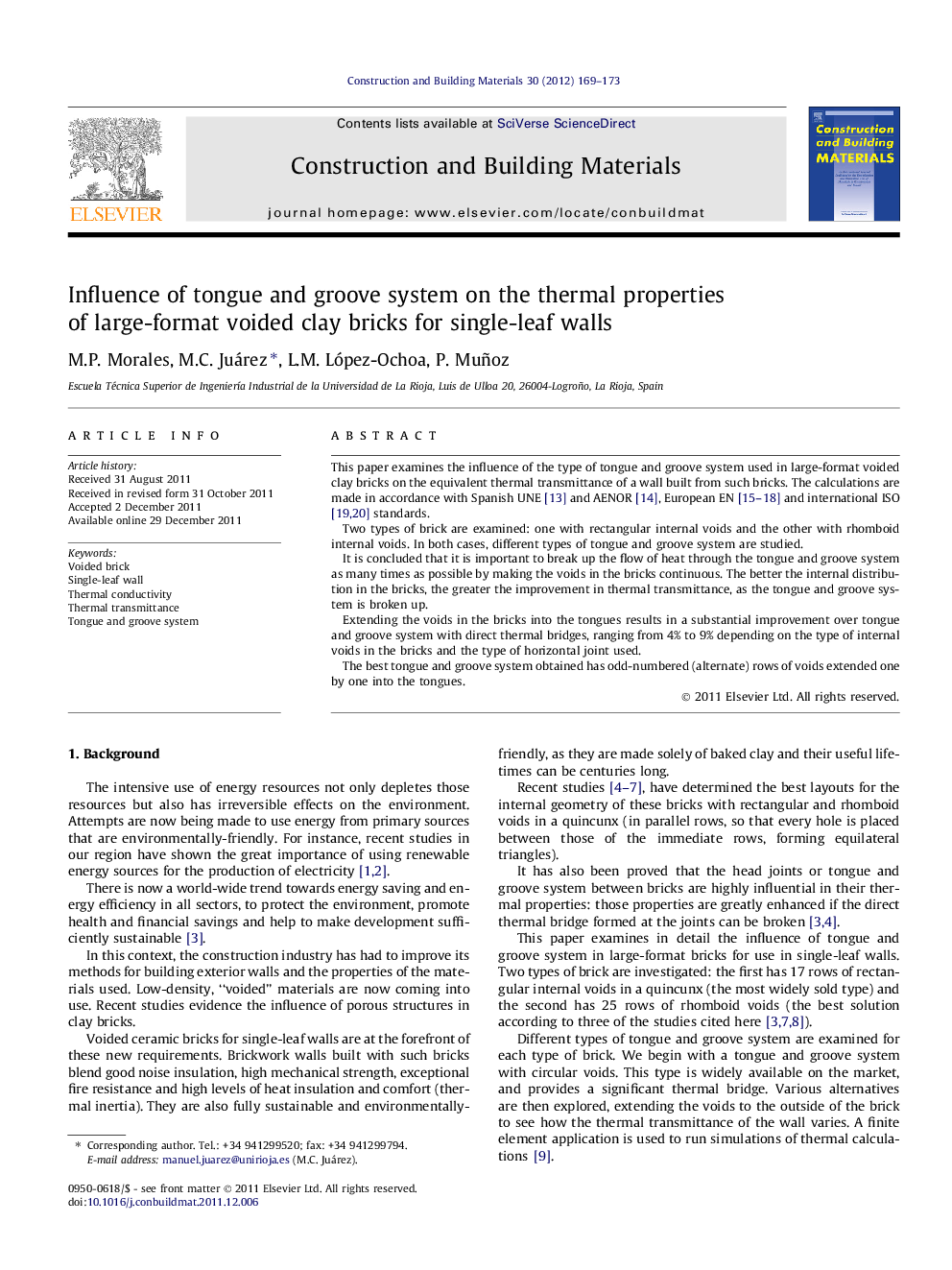| Article ID | Journal | Published Year | Pages | File Type |
|---|---|---|---|---|
| 258509 | Construction and Building Materials | 2012 | 5 Pages |
This paper examines the influence of the type of tongue and groove system used in large-format voided clay bricks on the equivalent thermal transmittance of a wall built from such bricks. The calculations are made in accordance with Spanish UNE [13] and AENOR [14], European EN [15], [16], [17] and [18] and international ISO [19] and [20] standards.Two types of brick are examined: one with rectangular internal voids and the other with rhomboid internal voids. In both cases, different types of tongue and groove system are studied.It is concluded that it is important to break up the flow of heat through the tongue and groove system as many times as possible by making the voids in the bricks continuous. The better the internal distribution in the bricks, the greater the improvement in thermal transmittance, as the tongue and groove system is broken up.Extending the voids in the bricks into the tongues results in a substantial improvement over tongue and groove system with direct thermal bridges, ranging from 4% to 9% depending on the type of internal voids in the bricks and the type of horizontal joint used.The best tongue and groove system obtained has odd-numbered (alternate) rows of voids extended one by one into the tongues.
► We have optimized the tongue and groove system of large-format voided clay bricks. ► The more breaks in the heat flux across it, the better the thermal performance. ► The best tongue and groove system has the odd rows extended one by one alternately. ► Best brick is the one with 25 rows of rhomboid voids perpendicular to the heat flux.
